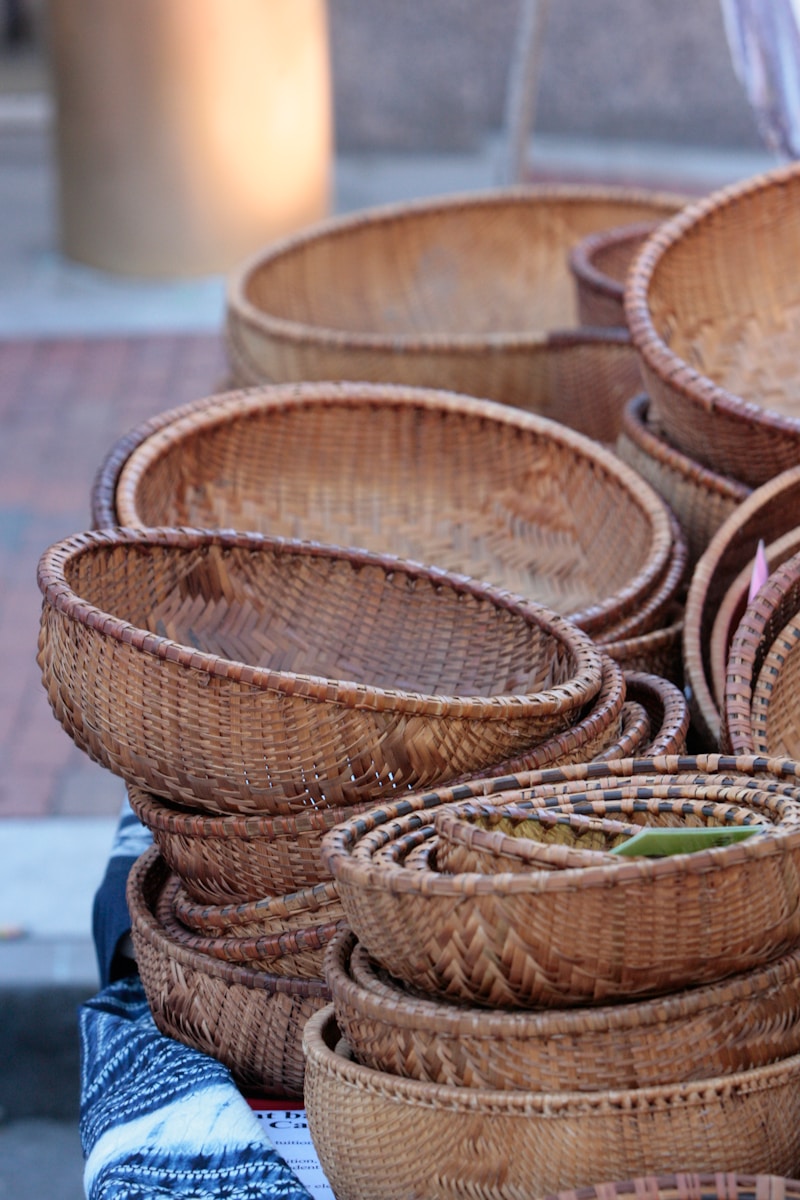The textural revolution: How woven baskets and natural fiber accessories are redefining modern interior design
The modern home is experiencing a tactile awakening. As homeowners increasingly seek spaces that engage the senses while reflecting environmental consciousness, woven baskets and natural fiber accessories have emerged as the cornerstone of contemporary interior design. This shift represents more than just aesthetic preference—it’s a fundamental reimagining of how we create living spaces that are both visually compelling and sustainably minded.
The integration of natural textures creates layered environments that invite touch and contemplation, transforming sterile spaces into warm, inviting sanctuaries. When designing rooms with these organic elements, incorporating high-quality posters serves as the perfect visual complement, adding depth and personality while maintaining the cohesive aesthetic that natural materials demand. This harmonious blend of tactile and visual elements creates interiors that speak to our innate connection with the natural world while satisfying our desire for thoughtfully curated spaces.
The market momentum behind natural fiber design
The surge in popularity of woven baskets and natural fiber accessories is backed by impressive market dynamics that reflect genuine consumer demand. The global natural fiber market was valued at approximately USD 69.2 billion in 2024 and is projected to grow to about USD 94.6 billion by 2030, demonstrating a robust compound annual growth rate of 5.4%. This growth trajectory underscores the shift from synthetic materials toward sustainable alternatives that offer both environmental benefits and superior aesthetic qualities.
What’s particularly striking about this trend is how it transcends mere functionality. Woven baskets and natural fiber accessories are experiencing a renaissance in 2025, evolving from simple storage solutions to refined design statements that blend artisanal craftsmanship with contemporary sensibilities. Large storage pieces made from natural materials are gaining particular traction in home decor markets, reflecting consumers’ preference for pieces that serve dual purposes—practical organization and textural interest.
The materials themselves are becoming increasingly sophisticated, with manufacturers incorporating ocean-recovered plastic weaves, bamboo textiles, natural cotton blends, and plant-based leather alternatives. These innovations contribute to distinctive textures while significantly reducing environmental impact, appealing to design-conscious consumers who refuse to compromise between style and sustainability. This market expansion is supported by government incentives promoting sustainable materials and regulatory frameworks that encourage industries to adopt environmentally responsible practices.
Sustainable innovation driving design excellence
The natural fiber revolution is powered by remarkable advances in both agricultural and processing technologies that have elevated the quality and versatility of these materials. Natural fibers such as cotton, flax, hemp, jute, and wool now offer superior comfort, breathability, and durability compared to their synthetic counterparts, while maintaining their inherent biodegradable and renewable properties. This technological evolution has enabled designers to push creative boundaries without sacrificing performance or longevity.
Circular economy principles are increasingly embraced by manufacturers, with innovative initiatives including comprehensive recycling programs, waste material repurposing, and modular designs that extend product lifecycles. These approaches not only reduce environmental impact but also create products with evolving aesthetic appeal—pieces that age gracefully and develop character over time. The result is furniture and accessories that tell stories, developing patina and texture that synthetic materials simply cannot replicate.
Transparency in production has become a consumer expectation rather than a luxury, with brands providing detailed sourcing information and utilizing technologies like blockchain to document the complete lifecycle of woven products. This level of accountability ensures that the natural fiber accessories adorning modern homes are produced ethically and sustainably, allowing consumers to feel confident in their design choices.
The innovation extends beyond materials to encompass manufacturing processes that minimize waste and maximize efficiency. Advanced fiber blending techniques create hybrid materials that combine the best properties of different natural fibers, resulting in products that are both aesthetically pleasing and functionally superior. These developments have opened new possibilities for interior designers seeking to incorporate sustainable elements without compromising on quality or visual impact.
Creating cohesive spaces with natural textures
The art of incorporating woven baskets and natural fiber accessories lies in understanding how these elements interact with other design components to create harmonious environments. These pieces excel at adding warmth and visual weight to spaces that might otherwise feel cold or incomplete, serving as anchoring elements that ground more delicate or refined furnishings. Their organic irregularities and handcrafted imperfections provide essential contrast to the precision of manufactured goods.
The versatility of natural fiber accessories allows them to transition seamlessly between design styles, from minimalist Scandinavian interiors to maximalist bohemian spaces. In contemporary settings, a carefully chosen woven basket can soften hard edges and introduce organic shapes that balance geometric furniture. In traditional environments, these pieces reinforce connections to heritage craftsmanship while providing practical storage solutions that don’t compromise aesthetic integrity.
The key to successful integration lies in layering textures thoughtfully, allowing each element to contribute to the overall sensory experience without overwhelming the space. Natural fiber accessories work particularly well when combined with other organic materials like wood, stone, and ceramics, creating a cohesive narrative that celebrates natural beauty. The interplay between different textures—the rough weave of a jute basket against smooth marble surfaces, or the soft drape of linen curtains complementing structured rattan furniture—creates visual interest and tactile richness that synthetic materials struggle to achieve.
Strategic placement of these elements can also influence the perceived scale and proportion of a room. Large floor baskets can anchor seating areas and define zones within open-plan spaces, while smaller woven accessories on shelves and surfaces add layers of detail that reward closer inspection. The natural color variations inherent in these materials provide subtle tonal shifts that enhance the overall color palette without introducing jarring contrasts.




